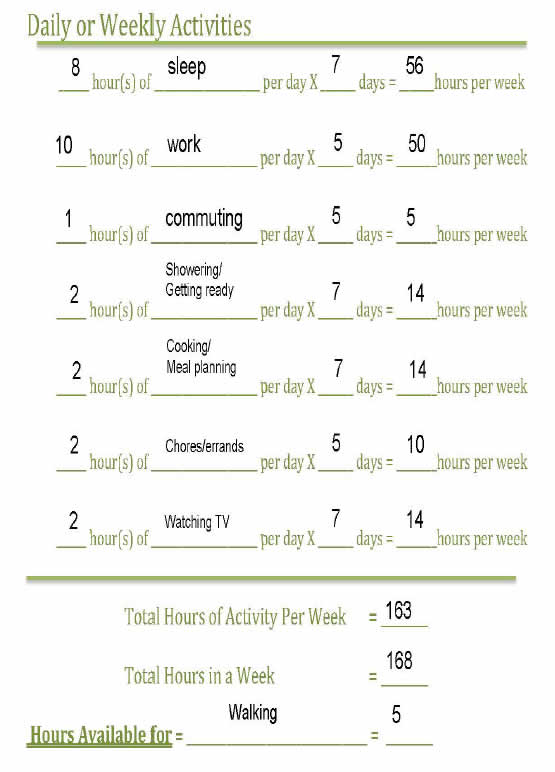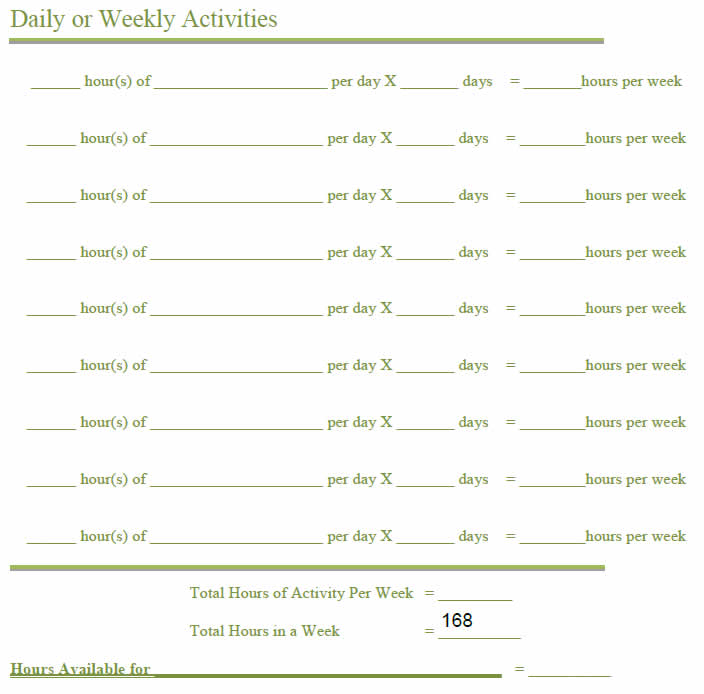Clinician Instructions
Patients often use "not enough time" as a reason they cannot incorporate more physical activity into their lives, or start preparing more nutritious foods, or participate in some kind of group or class intended to promote healthy lifestyles. This tool won't work with every patient, but it will give some the opportunity to objectively review their time "budget" and see where and how they are spending it. Ask the patient to consider their schedule in the same way they would be asked to review their finances. Everyone has the same 168 hours allotted each week… the goal of this activity is to determine how, where and why they are spending those hours.
In the spirit of motivational interviewing, this activity should not be presented in a way that puts your patient on the defense. Rather, he or she should be invited to complete the "Time Sheet" as a way to help them better understand if any opportunities exist in their very busy lives to devote to healthy changes. The beauty of this tool is that the patients self-discover where their time is going and can draw their own conclusions. Some may realize they are spending an inordinate amount of time in caregiving activities for others. Others may see that they are spending much more time surfing the Internet or watching TV than previously thought. They may decide that their time is well spent on the activities they are doing and see no reason to change. However, the tool serves as a catalyst to help resolve any ambivalence they may have about the changes they want to make and the inability to make those changes based on preconceived notions about their schedules.
Suggested Script
"Everyone is extremely busy… it's hard to find time to squeeze even one more thing into the day. Some patients have found this simple tool helpful. It works like a financial budget where you track everything coming in and going out. But it's easier than a financial budget, because what's coming in never changes. We all have 168 hours a week. The key is figuring out if you are spending those hours in the way that's best for you and your health.
"This tool will take about 5 minutes, at the most, to complete. Start with your normal activities, like working, commuting, sleeping, showering, shopping, meals, childcare, and so forth. Make sure you also include your downtime, such as watching TV, reading magazines, talking on the phone. You can see how the sample tool was completed. At the bottom, there's a blank space to write in whatever activity or change you might want to try.
"So just try this out. See where your time is going, and if you are leaving enough time for yourself for things you want to do to improve your health. Let me know what you find out and how the game worked for you."
Tool 18a. The "Time Game"—Example

Tool 18b. "The Time Game"—Patient Worksheet




